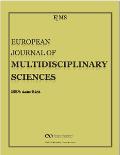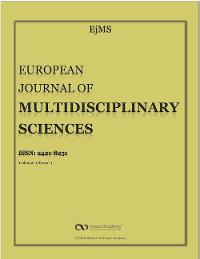Abstract
Taiwanese aboriginal cultures have been lightly valued. This study attempts to use the Accompany Model to help the aborigines of the Bunun and Siraya tribes develop their cultural identity. It establishes the design system through education to develop the local aborigines’ traditional craft art, and to advance how the tribes learn and grow together through creative workshops. The Post-Colonialism, Cultural Identity, and Narratology theories were adapted to reach a deeper interaction by “accompanying” aborigines. This not only builds their self-identity but also allows for an understanding of their culture through In-Depth Interviews and Long-Term Participation. Several design projects for the Bunun tribe were created by the researchers who volunteered to initiate creative activities for the Siraya tribe in recent years. This was in response to the growing need to generate a deeper intercultural knowledge of the aboriginal cultural and creative industry in order to preserve their cultural elements for the younger generation and the public. Overall, this research, through a literature review and information about the current status of the investigation and enforcement, focuses on link design, story, and culture integration. This research was undertaken to help the aborigines in Taiwan recognize and value their multicultural heritage. In conclusion, the cultivation of a new aboriginal identity will achieve ethnic harmony locally and globally.
Keywords: Bunun and Siraya tribes, accompany model, narratology, self-identity, cultural identity
Introduction
Taiwan's aboriginal tribes have faced long years of changing processes throughout their development and have continued to suffer from invasion of the external culture. These occurrences have resulted in assimilation and persecution in terms of the technical loss of the tribes’ indigenous culture and self-identity. However, no matter whether the mountain tribes or Pingpu aborigines, their unique cultures still exist in this land. With the current trends of cultural and creative industries in progress, this study suggests that the development and promotion of indigenous culture is important, with the need for its continuation and development. Since we have a common historical background, with a mission of reviving the self-cultural identity, our research team used the Accompany Model to help the aborigines of the Bunun and Siraya tribes develop their cultural identity (Hall & Du Gay, 1996; Pan & Peng, 2011). We established the design system through education to develop the local aborigines’ traditional craft and to advance how the tribes learn and grow together through creative workshops.
Literature Review
This study incorporated the Accompany Model for the cultural development of the Bunun and Siraya tribes as the basis for the research.
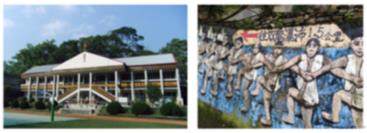
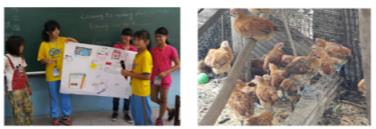

This study, expected to take place from 2015 to 2016, is undergoing more specific plans and implementation strategies, with local and international links to reveal the visual impact, and will inspire creative thinking and the integration of the lifestyle design. It is to be hoped that Taiwan’s aborigines’ unique cultural, can be innovative and demonstrate companionship through the design patterns, as well as convey the charm of the aborigines’ cultural stories and implement creative industries.
In this study, we investigated the Suang-long village of the Bunun tribe and the Liou-chong-creek village of the Siraya tribe as the main subjects of the research. We started with cultural development. By using the service design as our mission, we hope that this project could provide assistance to local tribes and assist in innovative design throughout the next three years so as to create a way to accompany the common roots of the tribal residents as a strong backup for the tribal culture and design.
It is hoped that equal partnership between the tribes will be strengthened through interaction with the residents in order to understand the different cultural elements of the tribes. The issue of innovative design involves helping with the development of local culture industries (Peng & Pan, 2013) and to reduce the impact of the cultural phenomenon. The research team will also provide a foreign experience in the aboriginal culture’s development in the hopes of providing Taiwanese aboriginal tribes with references to the world and to promote development of the local industry.
Research Questions and Purpose
This study incorporated the following objectives:
Since 2013, our research team has received funding from the Ministry of Science in Taiwan for research using the Accompany Model for the cultural development of the Bunun and Siraya tribes. This led us to investigate cultural and creative development in the local tribes. Our research team continued to keep a close connection with the Bunun and Siraya tribes and to have in-depth interactions with the local culture about its creative development, which gained the trust of the local tribes. The research team had the pleasure and privilege of helping both the Suang-long village of the Bunun tribe, and we found that both villages manifested considerable preservation of their traditional culture. We hope to continue supporting them in terms of agricultural development.
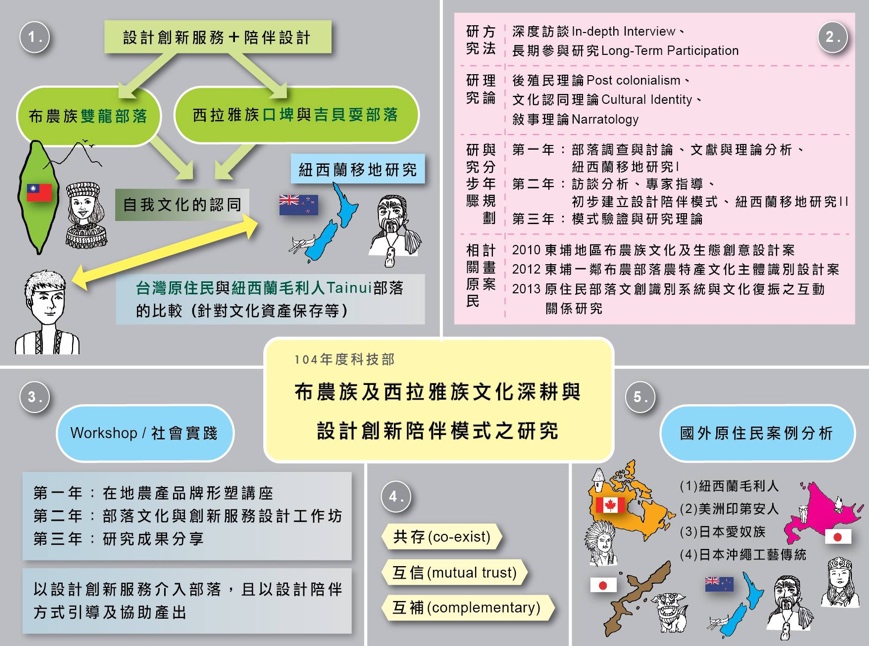
The research questions that guided this study are as follows:
Research Methods
In this research, the long-term plan to follow up with a longitudinal study will be applied. This project adopts the longitudinal study, which has the following advantages: it can be a more complete study in terms of the development process and the growth of the key components of the turning point—not only for the early effects observed in terms of stability issues, the role of research and development, and so on, but also to further investigate the case study. The execution of this project’s research methods includes field research and an in-depth interview, which are detailed below:
Field Research
Huang (2010) points out that the main practice of anthropology may precede field research since many schools borrow methods from field research to collect and study data. These can also be called field trips, but for the collection of raw data and summary description of the terms, its field of application covers archeology, environmental science, geology, geomorphology, geophysics, folklore, biology, ecology and others in the fields of natural or social sciences. In this research, the results can help us better understand the people, space, and relationship with the environment.
In-Depth Interviews
Wan (2004) points out that the interview is a tool to collect information so researchers can understand in depth the ideas of the respondents. Zuan et al. (2006) also stresses that the interview is based on a specific premise - to visit others and, by way of talking, get the respondents’ viewpoints on specific issues. The difference between interviews and everyday conversation is that interviews must have a clear purpose and be controlled in order to obtain the desired information. In terms of the overall structure of the classification, interviews can be divided into three phases: structured interviews, semi-structured interviews, and non-structured interviews.
Analysis of the Cultural Aspects of the Bunun and Siraya Tribes
The traditional culture and custom of aborigines have their unique aspects. However, due to the impact of modern civilization, they have been neglected for a long time. As we know, the traditional culture of aborigines is an important historical asset of Taiwan. It also implies a special meaning and value in the exploration of the native history of Taiwan. Bearing a tremendous research interest in Taiwan's visual culture, we have witnessed Taiwan's unique cultural diversity and its national resilience.
We have recently practiced several design projects for the Tong-Pu 1 site of the Bunun tribe. Also, we volunteered to participate in several cultural and creative activities for the Siraya tribe in recent years. While participating in those events, we deeply perceived the growing need to generate a deeper intercultural knowledge and a broader intercultural competence in response to the aboriginal cultural and creative industry. Therefore, this study attempts to establish I-SI-NGAN of the Bunun tribe, the KOU-BEI and KA-BUA SUA villages of Siraya tribe by carrying out a cultural identity system design to gain self-identity. It is our hope to preserve their cultural elements for the younger generation and the public.
“Research and Development of Accompany Model on Bunun and Siraya’s Tribes Incorporating with Design Innovations” is an attempt to assist I-SI-NGAN of the Bunun tribe in Sinyi Township, Nantou, the KOU-BEI and KA-BUA SUA villages of the Siraya tribe in Tainan by establishing a wonderland and reproducing their unique culture. It hopes to attain the following goals:
(1) To create a private brand and identity system design to develop aborigines’ traditional skills and craft art.
(2) To adopt Post-Colonialism, Cultural Identity, and Narratology theories to achieve a deeper interaction by “accompanying” aborigines. This not only builds their self-identity but also creates an understanding of their culture through In-depth Interviews and Long-term Participation (Wang, 1999).
(3) To advance the ways in which the tribes learn from each other and grow together through workshops in the future.
(4) Through a literature review and field research, we hope to understand the aborigines’ lifestyle, tradition, and innovation in culture as important bases for sustainable development.
(5) Through long-term participant observation and Participatory Design, cooperating with the tribes in agricultural development and cultural and creative industries, we hope to identify the unique tribal cultural values and assist in preserving ethnic cultural heritage.
Conclusions and Recommendations
In this study, we have conducted our investigation using Narratology as a theory. The main purpose is to explore the possibility of establishing a new narrative about marketing practices. We hope to follow up on the recovery of local stories so that the narrative can deepen the cultural context and create a touching story of the local brand. It is to be hoped that the aborigines’ credible and convincing stories could prompt self-confidence and speak loudly of their own Austronesian heritage. Overall, this research, through a literature review and the current status of investigation and enforcement, focuses on linking design, story, and culture integration. We hope that this research will help the aborigines in Taiwan recognize and value their multicultural heritage. The cultivation of the aboriginal identity will contribute to and sustain ethnic harmony locally and globally.
Acknowledgements
The author(s) declare that there is no conflict of interest.
References
Hall, S., & Du Gay, P. (1996). Question of cultural identity. London: Sage.
Huang, P. Y. (2010). Chuanhua topline special issue. Chuanhua, Xinbeishi, Taiwan.
Pan, C. Y., & Peng, L. H. (2011). Pass the Refined Siraya Culture Through Artistic Teaching, Proceedings of 2011 InSEA (International Society for Education through Art). Budapest: World Congress.
Peng, L. H., & Pan, C. Y. (2013). Promoting the Value of Local Industries to Assist the Development of Siraya Aborigines’ Local Cultural Industries, Proceedings of IASDR2013 (The 5th International Congress of International Association of Societies of Design Research), Tokyo, Japan.
Wan, W. L. (2004). Application of in-depth interviews in the qualitative research. Journal of Living Technology Education, 37(4), 17-23.
Wang, Z. Z. (1999). Participation observation. Taipei: Hong Zhi.
Zuan, et al. (2006). Design research. Chuanhua, Xinbeishi, Taiwan.
Copyright information

This work is licensed under a Creative Commons Attribution-NonCommercial-NoDerivatives 4.0 International License.

